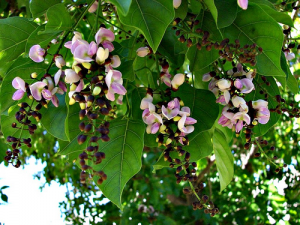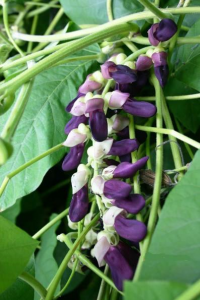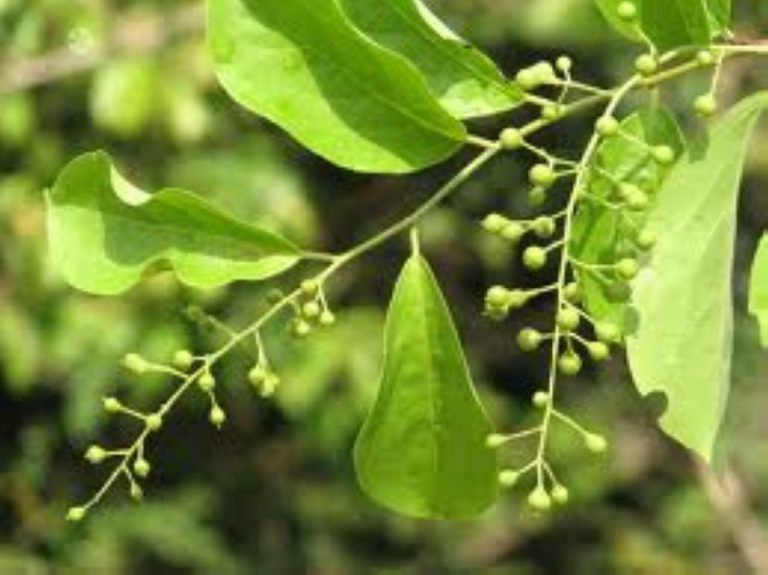Table of Contents
KARAVEERA – Nerium odorum Mill
Ayurvedic Herb
LITERARY REVIEW
Brihatrayi, identified as Shwetha Karaveera, Sushrutha mentioned some preparation of Karaveera and also Karaveera Kshara. Charaka mentioned as drug used for snana and pana. Karaveera is a detailed drug which is found as reference nighantualso. It is mentioned as upavisha by Rasashastra.
SOURCES
- Nerium indicum Mill
- Thevetia peruviana
- Theretia nerifolia Juss
VERNACULER NAMES
English :- Indian a sweet oleander
Hindi :- Kaner
Kannada :- Kanagile
TYPES OF KARAVEERA
According to Bhavaprakasha Nighantu
- Shwethapushpa Karaveera
- Rakthapushpa Karaveera
According to Raaja Nighantu
- Shwetha Karaveera
- Raktha Karaveera
- Peetha Karaveera
- Krishna Karaveera
According to Madanpal Nighantu
- Shwetha Karaveera
- Peetha Karaveera
According to Kaiyyadeva Nighantu
- Shwetha Karaveera
- Raktha Karaveera
- Peetha Karaveera
CHEMICAL COMPOSITION
All parts of the plant is poisonous.
Contain neridorine, karabiner having the paralyzing action on heart. Hence it is a cardiotoxicpoisone.
Glycosides(alkaloid) – have action on spinal cord.
Tannin , essential oil, crystalline wax.
Oleandrin -Present in the leaves.
RASA PANCHAKAM
Rasa: Katu and Tikta
Guna: Laghu and Ruksha
Virya: Ushna
Vipaka: Katu
Dashagnata: Kapha vaatahara
PRAYOGA
Indraluptha
Palitya
Netraroga
Kandu
Upadamsha
Krimi
Dushtavrina
Haemorroids
Opthalmia
PARTS USED
Root bank and root
DOSAGE
Root powder: 30-125 Mg
FOLKLORE USE
Dermatitis- Macerated leaves of oleander have been applied.
Also used in superficial tumor, syphilis, loss of hair.
Gingivitis :- A decoction of oleander leaves have been used and also as Nasal drop in children.
A fixed combination of oleander leaf powdered exact, preasants eye fluid exact lily of the valley fluied extract and squill powdered extract has been used for treating mild heart failure.
TOXINOLOGY
Mode of action
The cardiac effect of glycosides are due to direct cardio toxicity and an indirect effect via the vagal nerve. The direct effect is due to inhibition of Na –K AT Pase pump.
The specific action increases intracellular sodium ion and serum potassium concentrations. The Sodium influx lowers the membrane potential threshold, increasing excitability. The chromo tropic effect is primarily central medicated by an increase of vagal tone which decreases the rate of sinoatrial node depolarization.
TOXICITY
Between 7-20/handful of leave have been ingested by adult patients who were in toxicated but recovered completely, the dose of oleander in this sample is not known.
Children – A single leaf may be lethal .
FACULTY AND CIRCUMSTANCES OF POISONING
Fatal Dose : 15-20g of root, 5- 15 leaves
Fatal period: 20-36 hours
The roots, leaves or fruit are used as a paste or decoration for suicidal purpose.
Homicide is rare.
Abortificant –Root is used either locally or taken internally.
Root is taken internally for heating venereal diseases.
Root used in treatment of Ca and ulcers on form of paste.
ROUTE OF EXPOSURE OF NERIUM POISON
Oral –Parts of plants can be ingested accidently or in suicide attempts. Extracts of herbal teas made of Nerium oleander have been ingested for suicidal or medicinal purpose.
Inhalation – Smoke from burning Nerium oleander may be toxic.
Dermal – No data available.
Eye – No data available
Others- a futal case following rectal and oral administration of Nerium extract is,
Orally well absorbed.
Wide body distribution is expected, high concentration of oleandrin have been measured in blood, liver, heart, lung brain, spleen and Kidney in a fatal case Nerium oleander extract poisoning.
Elimination and excreation –oleanderin is climinated very slowly from the body (1-2 weeks).
SIGNS AND SYMPTOMS IN CASE OF NERIUM POISONING
The plant is occasionally source of contact demeititis . Emonations from flowers, especially when fading cause headache, dissiness, respiratory difficulty and nausea. Ingestion causes difficulty in swallowing and articulation, abdominal pain, Vomiting, profuse frothy salivation and diarrohea. Pulse is first slow and laterv rapid and weak, blood pressure falls, fibrillation, Av Block, respirations are increased, pupil dialted, muscular twinching, tetanix spasms, lockjaw, drowsiness, coma , respiratory paralysis and death.
Death usually results from cardiac failure.
DIAGNOSIS AND MANAGEMENT
Diagnosis is based on the clinical features like malaise, Vomiting abdominal pain, brady cardia dissiness ECG changes and a glycosides investigated by digoxin immunoassay. The triad of G I distress circumoral erythema and cardiac dysrhythmia should abert to the possibility of Nerium Poisoning.
Management is aimed at:
Gut decontamination by means of emilis on lavage.
Correction of electrolyte balance
Correction of serve bradycardia with atropine.
Correction of ventricular dysarrrhythmias.
Adminitration of digoxin – specific tab anti bodies could considered if available.
ANTITOXIN TREATMENT
In adults :-
Digoxin – Specific Fab antibody fragments have been used successfully in an adult patient intoxicated with Nerium oleandrium.
Although not available for routine use in all countries even for digoxin, poisoning, Fab fragments are a possibility to consider when Nerium Oleander poisoning is unresponsive to conventional treatment.
GROWTH
A temperature boundary for phase separation of membrane lipids extracted from Nerium odorum leaves was determined by analysis of polarization of florescence from the probe trance – parinaric acid florescence was detected at 7’ C and with membrane lipids from plants. Plants grown at 45” C/32”C (day and night) and 20” C /15”C respectively this change was associated with sharp increase in polarization of trans-parinaric acid indications sufficient domains of solid lipid form lelow7”C or -3”c in these preparations but not above these temperatures. In addition, spin label motion indicated that lipids of plants grows at low temperature are more fluid than those of plants grown at higher temperature.
CULTIVATION
Being a plant of Mediteranean origin, it is very resistant to cought. In its natural atmosphere, it appears in ravines that are practically dry during summer months. It cultivated outdoors and directly on floor, expect in very dry years, it will have enough with rain water.
Cultivated in pot, the best way to water it is to place it above a recipient with water and to leave it to absorb necessary quantity. In vegetative time –spring and summer –we should let the floor to become dry completely. In winter a watering every 15 days will be enough.
For indoor plant is convenient to water more abundently and to spray it quite frequently. In very dry atmospheres we will have to do it practically all throughout year.
Cultivated outdoors , it can be used as on isolated bush or to form hedges. A good way is to place it next to walls to adorn them3.
RESEARCH
Cardio toxic activity of tincture of Nerium indium is reported.
The alcoholic extract of root of Nerium indicum were moderatly active against flies and mosquitoes.
50% ethanolic extract of roots showed spasmogenic activity on isolated guinea pig ileum an CNS – depressant effects on mice.
The non –volatile resides obtained from extract of leaves showed moderate inhibition against the carcinoma.
A potent cardio tonic activity and symergism with calcium indicated presence of potent cardiac stimulant compound it extract.
Plumieride from roots showed significant antipyretic effect and anti inflammatory activity.
N. indicum is found to be more patent than digitalis.
Theretia Perviana also have got the cardio tonic effect against pentobarbital – inducted heart failure and therapetruic and to blood concentration of therein nerifolin, peruveside and its 2 –monoacetate were compared with those of digitalis preparation of guinea pigs. Highly Cardio tonic.
PROVED EFFECTS OF NERIUM ON DISEASES
Either native or naturalized to a broad area of Portugal and Mediterranean Sahara, South Africa. Nerium odontum is found in subtropical and tropical area. Karaveera have a cardio toxic effect. It should be used after correctly purified cause accidental poisoning to Ashwa. Hence the name Ashmaaraka.
Karaveera is a poisonous plant as said . Among these compounds are oleandrine which is a glycoside which is toxic on injected. It is used as a homicidal, suicidal, safety of paretaly and oral administration of nerium extracts is necessary.
Eventhough toxic a concentrated oleandrin extract was formulated for oral consumption to 46 cancer patients 0.2 mg extract per day. These dose where given 28 days.
Nerium is also used as in dermis for application. It is safe. There may be also some small significant, Side effect and with evidence of tumour response in cancer.
Hence even though Nerium odorum is toxic by the Purification and by taking of toxic substance, it can be used up to some dose.









